- Home
- Melissa de la Cruz
How to Become Famous in Two Weeks or Less Page 9
How to Become Famous in Two Weeks or Less Read online
Page 9
“Here, I’ll take your picture,” Michael said gamely, grabbing my Instamatic. I struck a pose in front of the restaurant. Unfortunately, he couldn’t figure out how to work the flash and I wound up standing still for five minutes with a frozen grin on my face. A group of real tourists had assembled in front of the restaurant, and they noticed our amateur photo shoot on the red carpet. I heard a suburban mom gush, “Oh, how cute, they’re pretending she’s famous!” The horror!
This was never going to work. If I was going to be famous, I would have to stop traveling solo, avec cheap camera. Who could I recruit to pretend to be a professional photographer? When I got home, I noticed my husband had taken it upon himself to paint blackboards on our kitchen wall. Hmmm. Mike was a creative architect who dabbled in photography.
By the next week, he was happily munching appetizers at a restaurant opening with his impressive-looking Nikon strapped to his chest. He dutifully captured my mug next to assorted demicelebs. It was certainly an improvement. I didn’t have to coerce strangers into taking my photo anymore. But I still had a ways to go —real paparazzi never help themselves to the hors d’oeuvres!
ONE IS THE LONELIEST NUMBER
If you ever wondered how famous people do it all—and look so good—it is because they have a team of people who do things for them. I had the skeleton of my squad—a therapist who would listen to me vent, an astrologer who would warn me when Mercury was in retrograde, a yoga instructor who would keep me grounded and in shape, a rolfer who kept my spinal cord in line, and an intern/assistant—but I needed a superficial circle, a group of people who would enhance my persona by coagulating around me whenever possible. Since so much of celebrity is about smoke and mirrors, I decided to round up a (faux) troop for my two weeks of celebritydom.
My first order of business was asking my friend John to follow me around with his digital Sony. Nothing says fame like a TV crew recording your every move. I brought him with me to parties, shopping excursions, and dinners. His wife, Sally, a dear friend who has always wanted to be a photographer, acted as John’s lighting expert. She followed him with camera flashes and portable lighting systems while he followed me. When I asked my yoga instructor for advice on my diet, I decided I could call her my nutritionist. I turned to a makeup-artist friend and asked her to do me up for all public appearances. Anytime I left the house, I called it an appearance. (“Sweetie, can you do my makeup today? I have to make a cameo at the pharmacy.”)
I asked the guy I was dating, a former wannabe thespian, who gave me some impressive insider tips on looking good on camera, to temporarily act as my manager, a manager who would hold my bags and screen anyone who wanted to talk to me. He happily accepted the job—and made me pay him back later by giving him many foot rubs. Taking cues from a Madonna interview I had read, I began to casually refer to each member of my new team. When someone gave me an assignment, I’d say, “Oh, you’ll have to call my manager.” When I got in the backseat of a taxicab, I’d say with a sniff, “Sir, can you slow down? My rolfer will not appreciate what this bumpy ride is doing to my sacrum.” Trying on clothes, I might exclaim, “This is the red my makeup artist was talking about!” At dinner I would announce, “Oh, my nutritionist thinks I should avoid complex carbs.” (I considered having my assistant call all restaurants before I went out to get some-intel on the menu in order to ensure that it met my dietary constraints, but that just seemed a bit much even though many a Hollywood assistant performs such idle tasks every day.)
Then, while I was doing errands, two cute twenty-ish-year-old women named Joey and Tanya approached me to find out if I was Karen Robinovitz. We had a friend in common, and after a bit of chatting, I learned that they were two of Britney Spears’s stylists. They were about to launch a new line of clothing, and when I said, “Maybe I could write about it,” they offered to dress me for a night on the town. Just like that, I had two stylists on my team.
For our fitting, they rented a suite at the Regent Wall Street Hotel—the very suite Liza Minnelli used before she got married months before. We ate beluga caviar between taking measurements. After I’d slipped in and out of a dozen frocks, my stylists convinced me to go out wearing a tattered leather skirt slit up to there, a matching newsboy cap, and nothing but a bra on top. “Famous people like to be naked,” they said.
I didn’t feel like I could pull it off. “I don’t know. My abs are so not made of steel,” I said.
“Girl, just work it like you’ve got it and you’ll pull it off. You look fierce,” Joey assured.
I conceded; being naked was a part of my brand name, as per my story, “The Naked Truth,” in Step I. Besides, I was sure the outfit would garner me much-deserved attention. So I sucked it up (and in), gulped down a glass of wine, and prepared to make my exit for the night. When we went out, I air kissed the doorman, a burly dude in faux fur, as if we were old pals. He let the rope down for me (must have been the belly button) and people actually started believing my hype. I slinked right past the crowd and made myself cozy at a plum table in the center of the party—along with my troop that included a videographer, a photographer, a trainer, an astrologer, four friends, two stylists, a makeup artist, and a large guy friend who doubled as my very own bodyguard that I nicknamed Big Rob, after Britney’s legendary thug. The next day I got a call from a friend of a friend, who said, “I saw you last night, and all of these people were surrounding you. I was trying to make my way over to you, but I couldn’t penetrate the crowd. Who do you think you are—Puff Daddy?”
“K. Robby,” I said. The next best thing.
THE FAME MAKEOVER
For a brief time in my life I was employed at a beauty magazine. One of the lasting lessons I learned from working at this publication is that hairstylists are the most amenable people in the world. When I worked there as a beauty writer, I would call the city’s most sought-after hairstylists at all hours—asking such questions as: “What do you mean when you say, ‘flatten the root’?” and “How exactly are you supposed to towel-dry after conditioning?” and “Did you say boar-or bear-bristle brushes are best?” One of the hairstylists who bore the brunt of my calls was Stephen Knoll, who owns the luxurious Madison Avenue salon where the likes of Elle Macpherson and Kim Cattrall get their locks trimmed. Stephen spent many an hour explaining to me just the right blow-dry techniques. Upon the publication of my piece, Stephen sent me a nice note saying, If you ever need anything—please just ask.
Little did he know I would keep him to his word—even if it was two years later. Once I accepted the “get famous” assignment, the first thing I did was look in the mirror. My roots had grown out so much my hair was two-toned. My skin was pale and dry. If I was to become a celebrity, I would have to look like one at all times. I realized I needed “people.” I had no people. I did my own hair and applied my own makeup. I called Stephen, reminded him of his promise, and he generously agreed to furnish me with a “fame makeover” and to provide hair and makeup for all my public appearances for two weeks.
On the first day, “Team de la Cruz,” as I nicknamed my coterie of stylists—Theresa (color), Kenneth Tepper (cut and blow-dry), and Melissa Silver (makeup)—was thrilled to see me. I made chitchat and lighthearted conversation with each of them. Kenneth gave me a fun, piecey Kirsten Dunst shag; Theresa turned my mousy brown locks into a ravishing red; and Melissa gave me a bronzy J. Lo glow.
Midway through the week, however, I began to feel paranoid every time I stepped into the salon. Melissa and Kenneth were as gracious as ever, but I felt increasingly guilty because none of their hard work had yet to surface in a photograph of me in print! I began to feel like a fraud. I regaled them with stories of the film premieres I had attended and the fashionable parties that were on my schedule, but I detected a faint and understandable skepticism under their enthusiasm. For all they knew, I was pulling the wool over their eyes. It’s very hard to have “people,” I learned. The weight of their expectations (of my fame) laid heavily on my conscienc
e. I never thought I would ever have to worry about disappointing anyone with my failure to become famous—except for my parents, that is.
At the very least, I made my husband happy. Mike thoroughly enjoyed my metamorphosis from frumpy work-at-home writer to gadabout ingenue, and he expressed his sorrow upon knowing the hair and makeup sessions would soon end. “Will you ever look this way again?” he asked sadly. “I’ve never seen you look so good!”
Team de la Cruz’s morale shot up on the second week, however, when photographs of me and my new look were plastered all over Gotham, Ocean Drive, New York magazine, and the New York Post. We exchanged cheerful high-fives, and Stephen personally came by to congratulate me. Later in the week, as Kenneth gave me one last blow-dry and Melissa dusted my nose with powder for the last time, I thanked and tipped them profusely. But I didn’t know whether to emerge triumphant or slink out the door. Even if I had delivered on my promise to become famous, I still felt like I had gotten away with something. But maybe that’s the secret to fame, after all.
THE PERSONAL LIFE COACH
Donna Karan has Deepak Chopra. Oprah has Dr. Phil. Richard Gere has the Dalai Lama. Members of species famous like to have a maharishi, spiritual healer, or some form of personal guru who helps them through that little journey called existence. Meet Stuart Gelles, my life and energy coach. I heard about him through a very fancy socialite I interviewed. “He has changed my life,” she oozed over chopped salads at Barney’s. She was adamant that I meet him. He was once a bigwig in the Hollywood scene, coaching important directors, actors, and moguls. “He really understands famous people,” she said. (I wasn’t sure that she was lumping me in the “famous” category, but I nodded knowingly, regardless.)
She went on and on about how she used to be a “doer,” someone who just went through the motions of life, and now she’s learning how to be a “be-er,” someone who really feels and balances it out with her “dreamer,” a term that embodies her spiritual and creative side. According to Stuart, there are three types of people: beers (the emotional energy that affects relationships, intimacy, self-esteem, and the heart), doers (the results-oriented energy that’s all about acting, reacting, organizing, goal setting, project managing, analysis), and dreamers (the spiritual energy, the side of oneself that thinks about creation, life purpose, divinity).
All three must work together equally for one to thrive. But the real challenge, as per Gelles’s teachings, is to live from another place, the altitude—which is almost like having an out-of-body experience—where you can see yourself as a be-er, doer, and dreamer, and understand the difference between them and your actions.
I wasn’t sure what to make of this so-called miracle man, but I was not in a great place at the time. I was struggling with serious boyfriend issues (the issue being: I wanted to break up with him and kept getting sucked back into his charm). After much contemplation (and an abominable weekend with the guy), I came to the conclusion that I needed professional help. Hey, the first step in solving a problem is admitting you have one. Besides, I have always been a sucker for all self-help modalities, and having a life coach on my team could do nothing but add to my grand entourage of players.
I called Stuart. He had a full, buoyant voice and a chatty personality. “You have to feel your pain and release it,” he said, “Pull the doer out of the equation and stop analyzing every detail and flushing out the drama. You can change your life by noticing what’s occurring in the three energies and learning to manage it. This is about having a life-management system.”
Well, it made sense to me. So I made an appointment immediately. When we sat down at his plush Connecticut office, he drew a picture of three circles—two overlapping adjacently, and one underneath, also overlapping. The top left represented “be-er” energy, the top right was “dreamer” energy, and the bottom was “doer” energy. He shaded in the common areas to explain that there is balance when all three are being used equally. The shaded areas formed the shape of a lotus flower, a known symbol of balance. (Coincidence? I think not.)
When Stuart evaluated my “three circles,” we saw where I was unbalanced. I was using more doer and dreamer than be-er, which all made sense. My life was in a state of perpetual motion. I was chronically overloading my schedule, writing dozens of articles, all while trying to be famous…. I was doing, doing, doing. I was dreaming, too, using my creative vision to come up with ideas for aquiring celeb status, stories, books, screenplays, and such. And my poor be-er was all left out.
“Life is more than ‘how do we feel or what do we do’ or ‘how do we feel about what we do’ and ‘what do we do about how we feel.’ Integrating the spirit into the be-er and doer, finding a balance between them, is where the power is,” he said. Yawn if you want to, but this all resonated with me. It helped me see myself beyond the boyfriend troubles. My doer, generally speaking, was searching for the limelight, preventing my spirit from finding the light from within.
After one session, I broke up with the boyfriend, moved on beautifully, and haven’t had any man drama since (well, maybe a little, but who’s counting?). Now I call Stuart for pep talks every time my circles are out of whack and he’s always there, reminding me of the lessons I need—and what a star he thinks I am!
WHO’S ON YOUR TEAM?
TO BE FAMOUS, PUT THESE EXPERTS ON THE PAYROLL
• A hairstylist. No more flitting from salon to salon in search of the holy hair grail. Find an affordable, affable hairstylist (try the local salon-type school or an assistant at the best and most expensive salon near you; assistants at high-priced salons are often surprisingly cheap) and make a commitment to him (or her). Someone who has intimate knowledge of your hair is key—you need to be able to pop into the salon (or invite the stylist over) for emergency blow-outs without worrying about big-hair missteps. Keep your relations with your stylist friendly, so you can always secure an appointment, even during rush-hour hair traffic. That means tip them well—and send holiday gifts and cards.
The Privé Beauty Team
From Left: Vanessa Mitchell (hair), Ludovic Audesson (hair color), Mel, Maureen Wolfe (makeup), Karen, Roman Lilley (hair). If we don’t look good, they don’t look good!
• A stylist, whose job it is to dress you for big occasions and help you cultivate a personal style. While celebrities rely on stylists who make well over $100 an hour just to pick the right plunging Gucci top (or in Mariah Carey’s case, the wrong one), all you need is a good pair of eyes and the advice of your most fashionable friend. Take her shopping with you and follow her advice. Also become friends with the manager of the hippest store in town, and eventually the two of you will be shopping together at flea markets and chic boutiques all over the city in order to develop your wardrobe. Call that person your stylist.
• Makeup artist. Celebs and even some fashion editors we know pay makeup artists to arrive at six A.M. at their homes to do their “faces” every morning. If you can’t afford a makeup artist, scout a beauty-training school or class or someone who’s just starting out and can do the job on the cheap.
• Photographer. Before you attract the attention of real paparazzi, you’re going to have to travel with your own. Ask your significant other or a good friend to carry a camera and snap your photo at crowded parties. Soon enough, people will be asking, “Who’s that girl?” and before you know it, other (real) camera flashbulbs will start blinding your vision, too.
• Trainer of some sort, be it yoga, pilates, weight lifting, boxing. Travel with this person, if possible. Sting never goes anywhere without his two yoga instructors. He has taken them to Italy, France, London, you name it.
• Dermatologist. They’re the new therapist, always on call to make you feel better about yourself with microdermabrasion, shots of Botox, and pimple-popping capabilities. This person should be on your speed dial—and make friendly house calls without charging you. So if you don’t have a dermo-friend, make one. Fast.
• Plastic surgeon. This is for a
dvanced levels of fame—and those over forty—only. Find someone who’s discreet and won’t make you look like Melanie Griffith.
• Some kind of spiritual healer, coach, or guru. Celebrity comes with its own share of problems—lack of privacy, pressure to be perfect, a private jet that’s always late. You’ll need some serious aura cleansing.
• Bodyguard(s). It could be your most buff friend, a trainer at your gym, or someone who makes you feel safe, even if it’s an ex-con. Celebrities need to be protected at all times. The latest trend is hiring former government operatives—FBI, CIA, and Israeli army secret service agents.
• Other forms of security, such as bouncers who surround you to prevent the riff-raff and D-list from getting in your way. In fact, they should be so big and tough that no one should be able to see you when you walk across the street. Warning: This type often causes fights and commotion, which may not be a bad thing when you’re seeking attention.
• Your assistant’s assistant. For advanced levels of fame only.
FAN FAIR
I GIVE IT FIVE STARS!!!
Like every author who’s ever had a novel published, I was anxious about its critical reception. I was worried that the book’s light tone, caustic humor, and picaresque plot might not receive as warm an embrace from critics who favored weightier, more serious subject matter—like childhood traumas and the lonely lives of people who lived in remote rural villages. So it was a relief when the reviews came in—and most of them were good. Some were solid raves, and while there were a few (you know who you are!) dissenting voices that crushed my spirit and sent me rollicking down the valley of insecurity and despair, I was thrilled with its acceptance by the publishing and media communities. But I had yet to meet an author’s worst nemesis: disgruntled readers on Amazon.com.

 Gates of Paradise
Gates of Paradise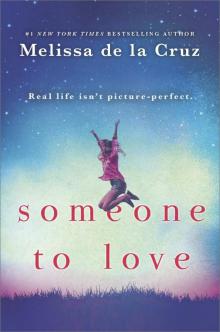 Someone to Love
Someone to Love Pride and Prejudice and Mistletoe
Pride and Prejudice and Mistletoe Serpent's Kiss
Serpent's Kiss The Au Pairs
The Au Pairs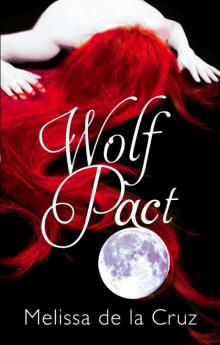 Wolf Pact
Wolf Pact Witches 101: A Witches of East End Primer
Witches 101: A Witches of East End Primer Jealous?
Jealous? Cat's Meow
Cat's Meow Misguided Angel
Misguided Angel Birthday Vicious
Birthday Vicious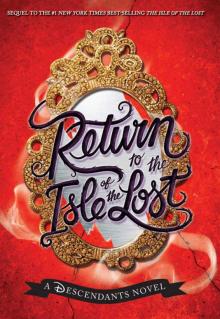 Return to the Isle of the Lost
Return to the Isle of the Lost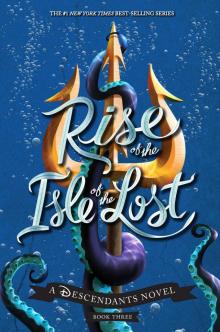 Rise of the Isle of the Lost
Rise of the Isle of the Lost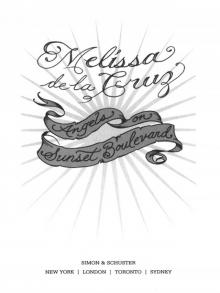 Angels on Sunset Boulevard
Angels on Sunset Boulevard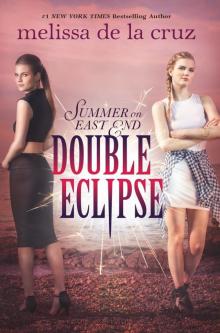 Double Eclipse
Double Eclipse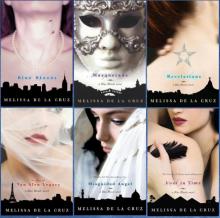 Blue Bloods
Blue Bloods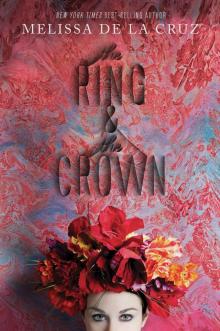 The Ring and the Crown
The Ring and the Crown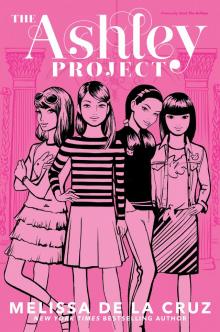 The Ashleys
The Ashleys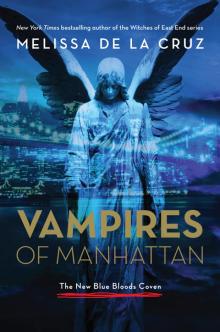 Les vampires de Manhattan
Les vampires de Manhattan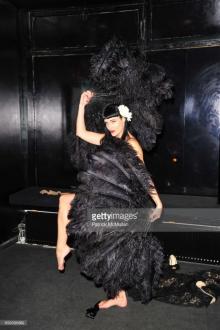 The Van Alen Legacy
The Van Alen Legacy Sun-Kissed
Sun-Kissed The Isle of the Lost
The Isle of the Lost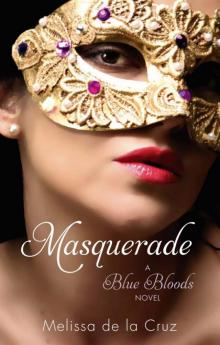 Masquerade
Masquerade Witches of East End
Witches of East End Diary of the White Witch
Diary of the White Witch Crazy Hot
Crazy Hot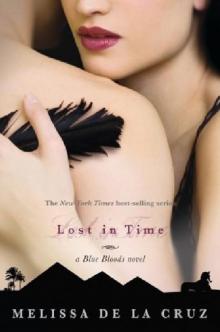 Lost in Time
Lost in Time White Nights: A Vampires of Manhattan Novel
White Nights: A Vampires of Manhattan Novel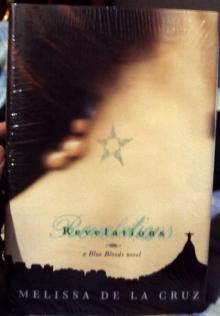 Revelations
Revelations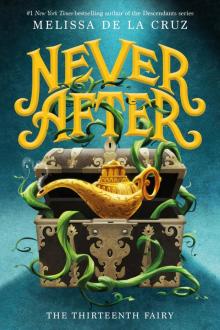 The Thirteenth Fairy
The Thirteenth Fairy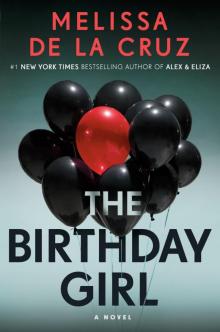 The Birthday Girl
The Birthday Girl Lip Gloss Jungle
Lip Gloss Jungle Fresh Off the Boat
Fresh Off the Boat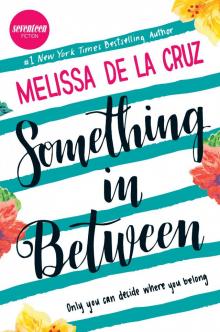 Something in Between
Something in Between Winds of Salem
Winds of Salem The Queen's Assassin
The Queen's Assassin Love & War
Love & War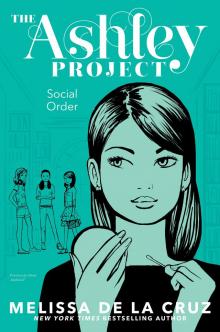 Social Order
Social Order Skinny Dipping
Skinny Dipping 29 Dates
29 Dates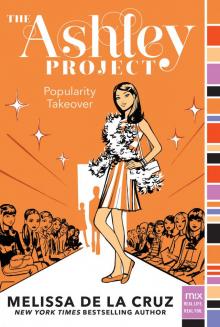 Popularity Takeover
Popularity Takeover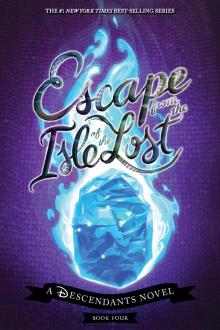 Escape from the Isle of the Lost
Escape from the Isle of the Lost Beach Lane
Beach Lane Bloody Valentine
Bloody Valentine All for One
All for One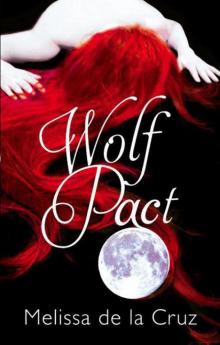 Wolf Pact: A Wolf Pact Novel
Wolf Pact: A Wolf Pact Novel The au pairs skinny-dipping
The au pairs skinny-dipping Lip Gloss Jungle (Ashleys)
Lip Gloss Jungle (Ashleys) Crazy Hot (Au Pairs)
Crazy Hot (Au Pairs)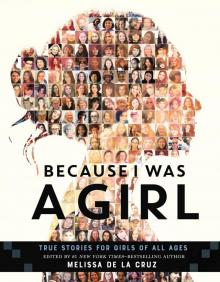 Because I Was a Girl
Because I Was a Girl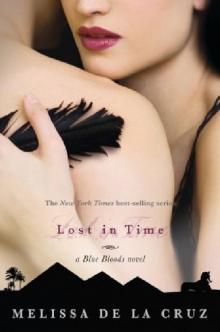 Blue Bloods 6 - Lost in Time
Blue Bloods 6 - Lost in Time Sun-kissed (Au Pairs, The)
Sun-kissed (Au Pairs, The)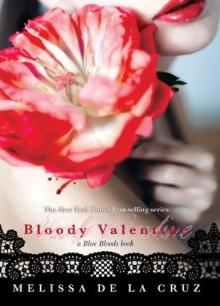 Bloody Valentine bb-6
Bloody Valentine bb-6 Golden
Golden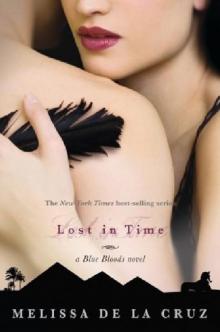 Lost in Time_A Blue Bloods Novella
Lost in Time_A Blue Bloods Novella Alex and Eliza--A Love Story
Alex and Eliza--A Love Story Blue Bloods: Keys to the Repository
Blue Bloods: Keys to the Repository Birthday Vicious (The Ashleys, Book 3)
Birthday Vicious (The Ashleys, Book 3) Keys to the Repository
Keys to the Repository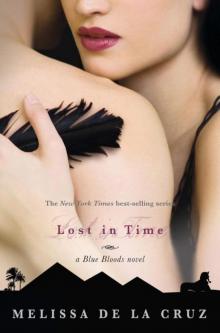 Lost In Time (Blue Bloods Novel)
Lost In Time (Blue Bloods Novel) Stolen
Stolen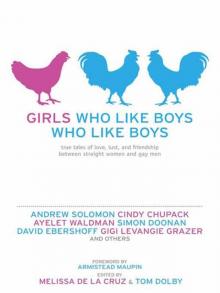 Girls Who Like Boys Who Like Boys
Girls Who Like Boys Who Like Boys the au pairs crazy hot
the au pairs crazy hot Blue Bloods bb-1
Blue Bloods bb-1 Witches 101
Witches 101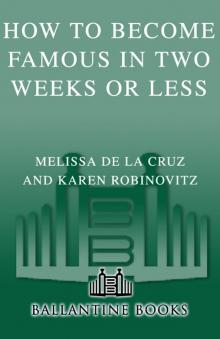 How to Become Famous in Two Weeks or Less
How to Become Famous in Two Weeks or Less Frozen hod-1
Frozen hod-1 Jealous? (The Ashleys, Book 2)
Jealous? (The Ashleys, Book 2) Misguided Angel (Blue Bloods)
Misguided Angel (Blue Bloods) Winds of Salem: A Witches of East End Novel
Winds of Salem: A Witches of East End Novel The Gates of Paradise
The Gates of Paradise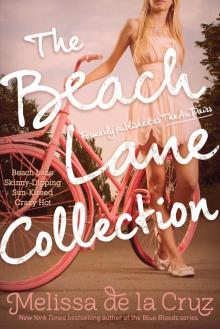 Beach Lane Collection
Beach Lane Collection Wolf Pact, The Complete Saga
Wolf Pact, The Complete Saga Gates of Paradise, The (Blue Bloods Novel)
Gates of Paradise, The (Blue Bloods Novel)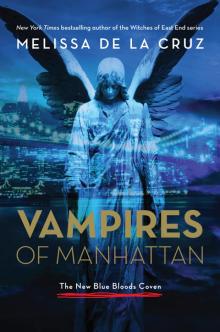 Vampires of Manhattan
Vampires of Manhattan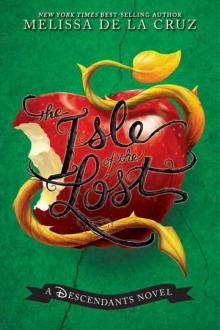 Isle of the Lost
Isle of the Lost Love & War_An Alex & Eliza Story
Love & War_An Alex & Eliza Story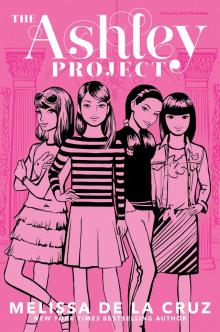 The Ashley Project
The Ashley Project Love & War--An Alex & Eliza Story
Love & War--An Alex & Eliza Story